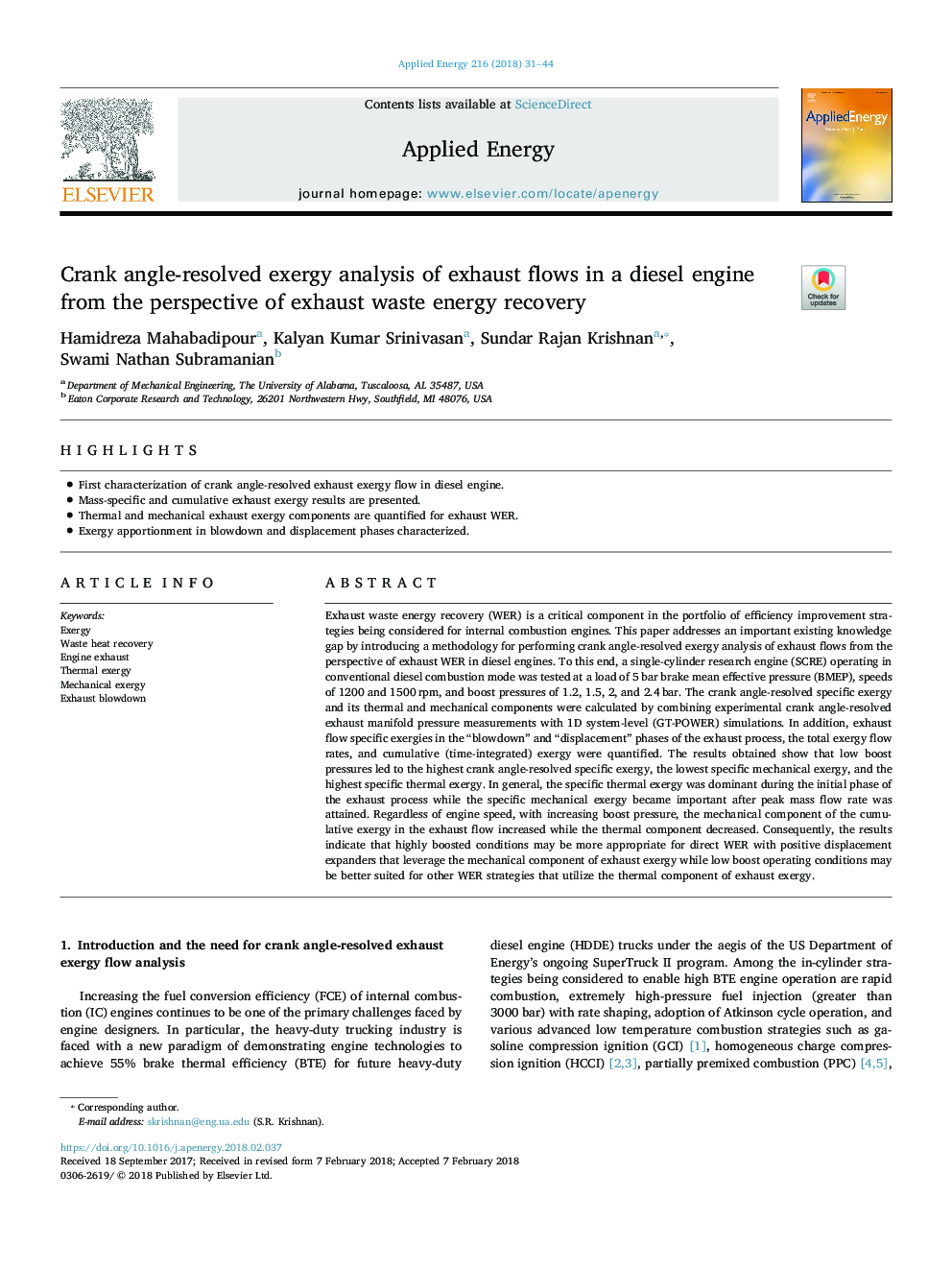| کد مقاله | کد نشریه | سال انتشار | مقاله انگلیسی | نسخه تمام متن |
|---|---|---|---|---|
| 6680499 | 1428074 | 2018 | 14 صفحه PDF | دانلود رایگان |
عنوان انگلیسی مقاله ISI
Crank angle-resolved exergy analysis of exhaust flows in a diesel engine from the perspective of exhaust waste energy recovery
ترجمه فارسی عنوان
تجزیه و تحلیل اگزرژی حلقوی زاویه ای از جریان اگزوز در یک موتور دیزل از منظر بازیابی پسماندهای اگزوز
دانلود مقاله + سفارش ترجمه
دانلود مقاله ISI انگلیسی
رایگان برای ایرانیان
کلمات کلیدی
اگزرژی، بازیابی گرما زباله، اگزوز موتور، اگزرژی حرارتی، اگزرژی مکانیکی، تخلیه اگزوز،
موضوعات مرتبط
مهندسی و علوم پایه
مهندسی انرژی
مهندسی انرژی و فناوری های برق
چکیده انگلیسی
Exhaust waste energy recovery (WER) is a critical component in the portfolio of efficiency improvement strategies being considered for internal combustion engines. This paper addresses an important existing knowledge gap by introducing a methodology for performing crank angle-resolved exergy analysis of exhaust flows from the perspective of exhaust WER in diesel engines. To this end, a single-cylinder research engine (SCRE) operating in conventional diesel combustion mode was tested at a load of 5â¯bar brake mean effective pressure (BMEP), speeds of 1200 and 1500â¯rpm, and boost pressures of 1.2, 1.5, 2, and 2.4â¯bar. The crank angle-resolved specific exergy and its thermal and mechanical components were calculated by combining experimental crank angle-resolved exhaust manifold pressure measurements with 1D system-level (GT-POWER) simulations. In addition, exhaust flow specific exergies in the “blowdown” and “displacement” phases of the exhaust process, the total exergy flow rates, and cumulative (time-integrated) exergy were quantified. The results obtained show that low boost pressures led to the highest crank angle-resolved specific exergy, the lowest specific mechanical exergy, and the highest specific thermal exergy. In general, the specific thermal exergy was dominant during the initial phase of the exhaust process while the specific mechanical exergy became important after peak mass flow rate was attained. Regardless of engine speed, with increasing boost pressure, the mechanical component of the cumulative exergy in the exhaust flow increased while the thermal component decreased. Consequently, the results indicate that highly boosted conditions may be more appropriate for direct WER with positive displacement expanders that leverage the mechanical component of exhaust exergy while low boost operating conditions may be better suited for other WER strategies that utilize the thermal component of exhaust exergy.
ناشر
Database: Elsevier - ScienceDirect (ساینس دایرکت)
Journal: Applied Energy - Volume 216, 15 April 2018, Pages 31-44
Journal: Applied Energy - Volume 216, 15 April 2018, Pages 31-44
نویسندگان
Hamidreza Mahabadipour, Kalyan Kumar Srinivasan, Sundar Rajan Krishnan, Swami Nathan Subramanian,
